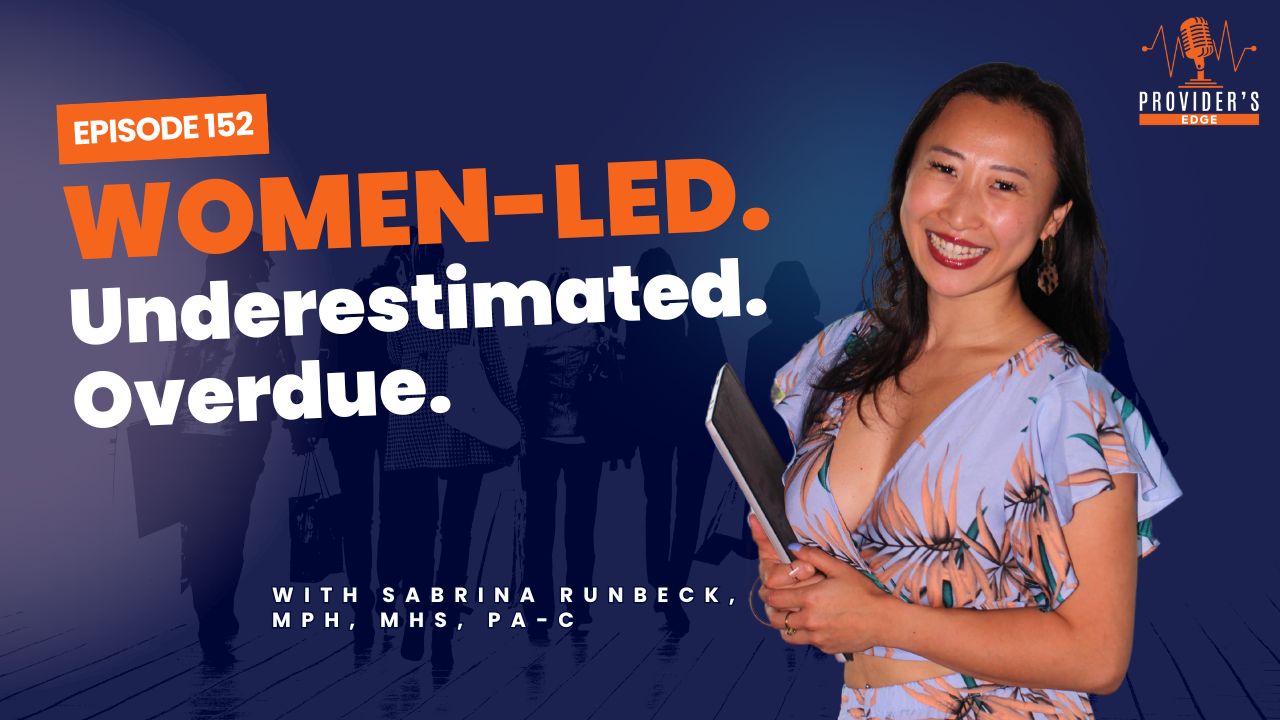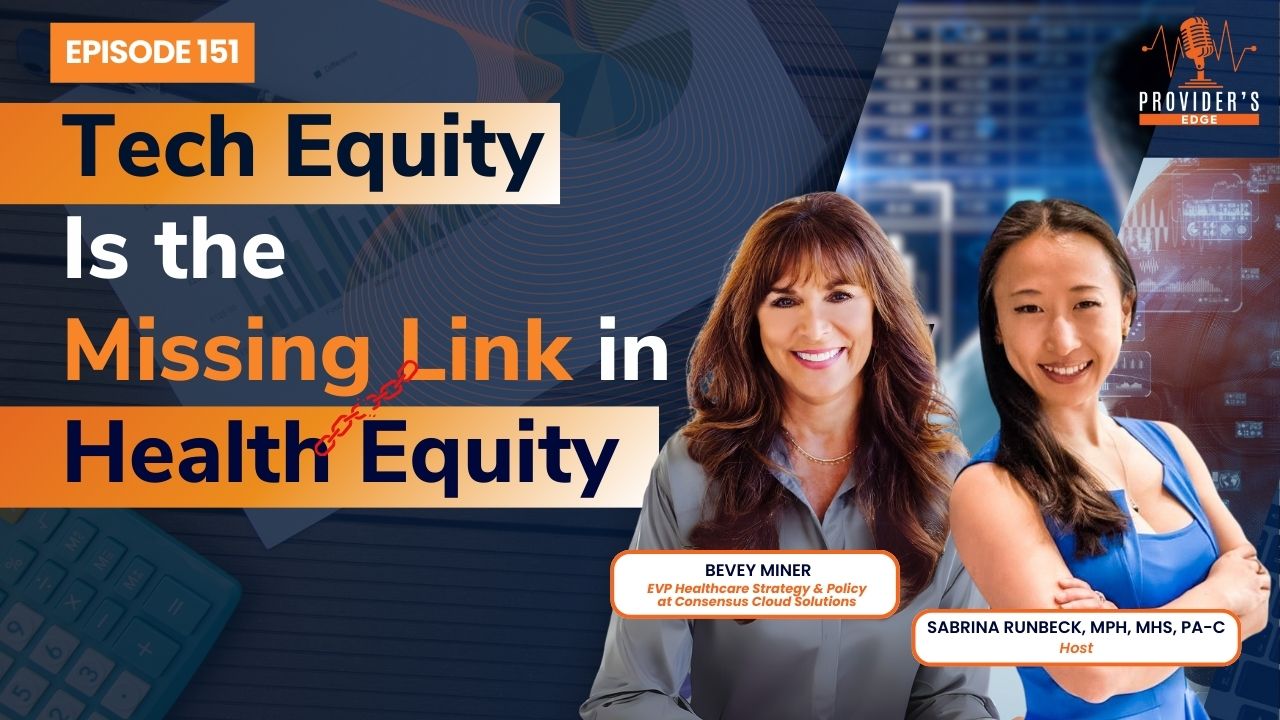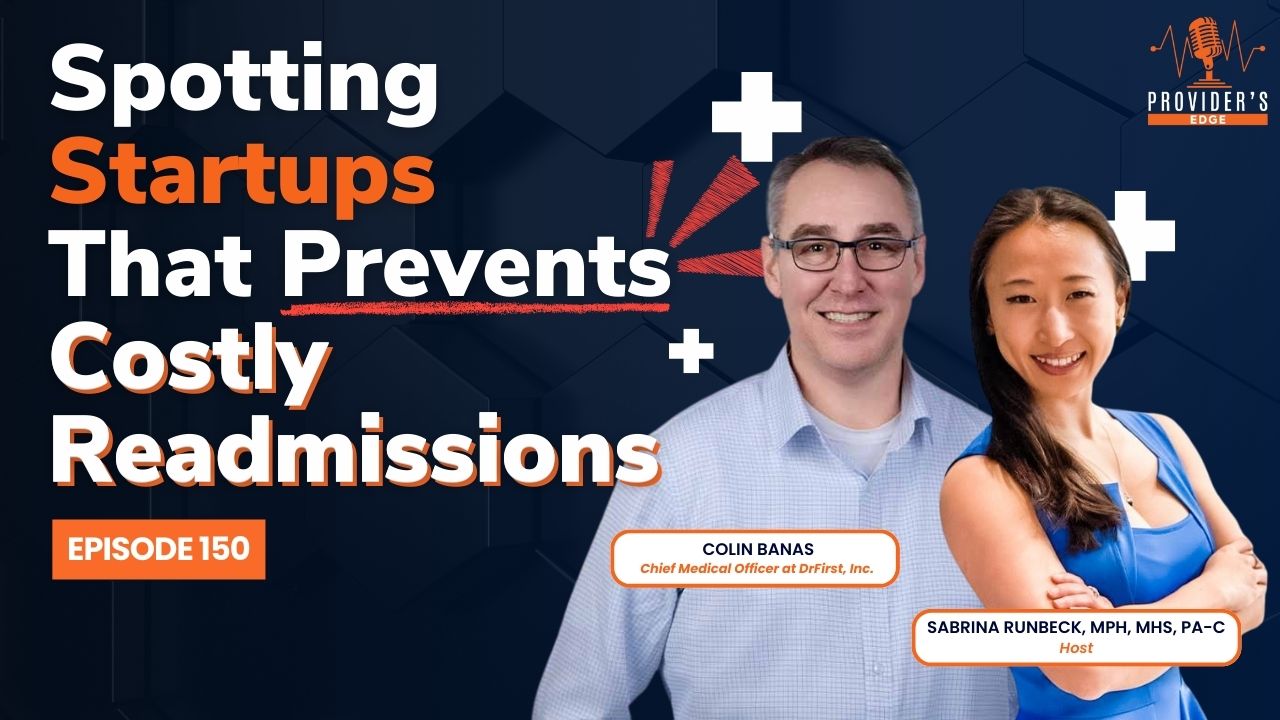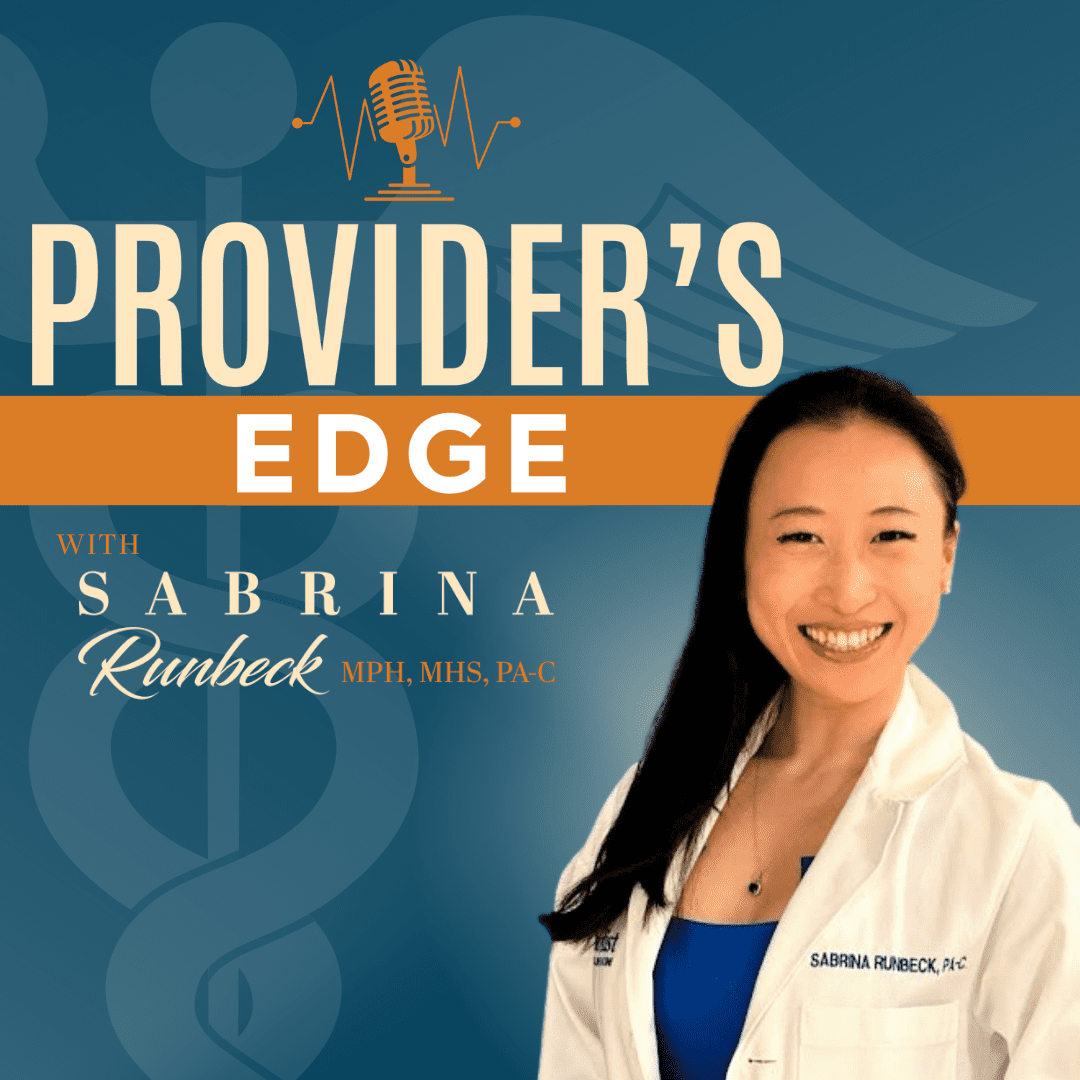
Where Investors See ROI:
When Access Meets Precision
Investors don’t want another dashboard—they want clear proof their capital fuels patient outcomes and profitability. When virtual second opinions correct 25% of diagnoses and cut $12K per case, that’s not soft ROI—it’s system-level leverage.
Listen anywhere you get your podcastin' on.
Live Interview
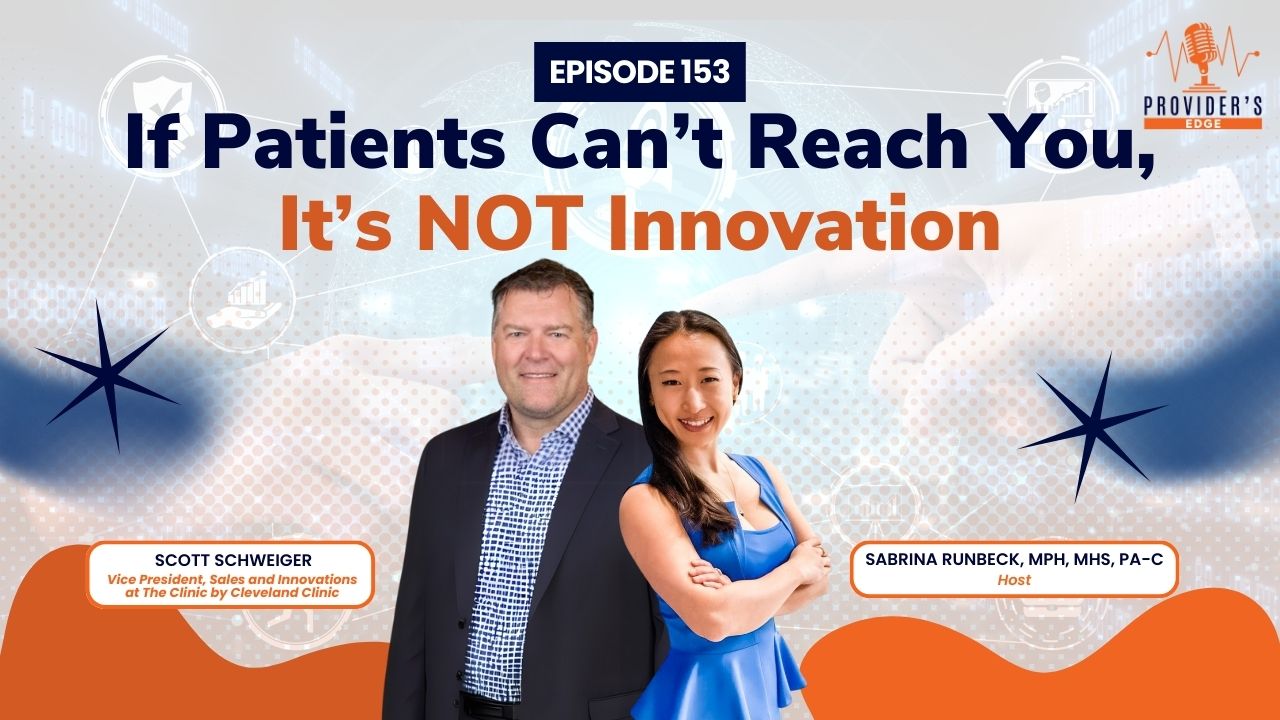
How The Clinic by Cleveland Clinic Turns Missed Diagnoses Into Measurable ROI
When it comes to scaling in healthcare, most startups hit the same wall: access. Not access to capital. Not access to code. Access to the right patients, the right partners, and the right data at the right time.
In Episode 153 of the Provider’s Edge podcast, Scott Schweiger of The Clinic by Cleveland Clinic joined me to break down how their virtual second opinion platform is solving one of healthcare’s most expensive, invisible problems: misdiagnosis and mistreatment.
Let’s look at why this model is capturing investor attention—and how your portfolio companies can replicate the strategy.
1. Misdiagnosis Is a $100B Problem
According to national estimates, up to 12 million people are misdiagnosed annually in the U.S. That translates to unnecessary treatments, prolonged pain, and avoidable costs. What’s worse? Patients often don’t know they were misdiagnosed until their condition worsens.
The Clinic’s model addresses this by:
- Delivering sub-specialty insights across 550+ domains
- Coordinating data collection for overwhelmed patients
- Returning second opinions within days, not weeks
- Keeping the case open for 30 days of follow-up support
As Scott shared, this system gives patients something they rarely get in a clinical setting: breathing room.
"People come to us full of anxiety. They've just been told something life-changing and want answers. We're giving them a way to feel in control of their care path." — Scott Schweiger
This isn’t just good medicine. It’s economic intelligence. A single diagnosis shift or treatment tweak can save a plan up to $12,000 per case, especially in high-cost areas like musculoskeletal conditions, oncology, cardiology, and neurology.
2. Wedge, Don’t Replace: Why Point Solutions Are Winning
A major reason The Clinic is scaling so effectively is because it doesn’t try to replace what already works. Instead, it finds where care delivery is failing—and wedges itself in to solve a specific problem.
This is key for healthcare investors evaluating implementation risk.
"Most of our contracts are result-based. We help clients target just the 20% of members driving 80% of costs." — Scott Schweiger
Their go-to-market strategy includes:
- Employer benefit packages
- Health plan integration (ASO, fully insured)
- Direct-to-consumer channels
This flexibility gives them a wide reach and strong data insight—allowing them to tailor solutions that align with each payer or employer's highest priority cases.
As I emphasized during our conversation:
"We don’t need to reinvent healthcare. We need to reinforce the gaps where lives are slipping through. That’s what wedge solutions do best." — Sabrina Runbeck
3. Results-Based Growth, Not Just Pilots
Unlike startups chasing pilots with no scale plan, The Clinic anchors its value in performance. That means:
- 70% of second opinions lead to a treatment change
- 25% result in a diagnosis change
- Documented cost reductions of $5K–$12K per case
And they don’t stop there. These metrics feed back into claims data, helping payers recalibrate population health priorities. That’s a feedback loop every investor wants to see: data in, decisions out, impact tracked.
Scott noted:
"You don’t have to redesign your ecosystem. We slide into it. Then we analyze the claims data, look at the diagnosis codes, and help you see the trends others are missing."
4. Why Investors Should Look Beyond Interfaces
Everyone loves a slick interface. But health systems are drowning in dashboards. What they need is alignment, not aesthetics.
The Clinic achieves this by blending:
- AI-driven intake and triage
- Human-led navigation from registered nurses
- Real-time collaboration with existing care teams
"AI does 80-90% of the work, but humans move the needle." — Sabrina Runbeck
This approach reduces burnout, improves communication, and creates a clear chain of decision-making—especially valuable in high-stress care settings where every delay has a cost.
"Clinicians don’t want one more platform. They want someone who helps them make better calls with less friction. That’s what our team does."
5. Scalable Precision: From Rural Access to Global Impact
One underappreciated part of The Clinic’s model is its scalability across care deserts and international markets.
For example, many patients in rural areas must drive hours—or be airlifted—just to receive a proper diagnosis. The Clinic’s remote second opinion platform closes that gap entirely, without asking them to leave home.
This matters for:
- Self-funded employers managing dispersed populations
- Global firms needing support for employees abroad
- Health systems looking to extend specialist access beyond urban hubs
It also opens new revenue channels without the need for facility expansion.
"When we can match a patient with the right specialist, regardless of geography, that’s true access. And access is what drives outcomes." — Scott Schweiger
6. A New Model for Modern Care Navigation
Beyond the metrics, what The Clinic truly offers is care literacy and empowerment.
By involving patients in the process, helping them understand their diagnosis, and supporting them in navigating next steps, they build a level of trust and engagement that other models struggle to reach.
And for investors? That means retention, satisfaction, and loyalty.
"Empowered patients make better decisions. And better decisions lead to better outcomes, faster timelines, and stronger business cases." — Sabrina Runbeck
Key Takeaways for Investors
If you're evaluating healthtech investments, look for companies that:
- Deliver measurable outcomes, not just engagement metrics
- Partner with systems, not compete with them
- Blend human and digital touchpoints
- Operate across payer, employer, and direct-to-consumer channels
- Align with value-based care incentives
The Clinic by Cleveland Clinic is proving that these elements aren’t just idealistic—they’re investable.
Discover how The Clinic by Cleveland Clinic is turning diagnostic errors into ROI by combining second opinions, white-glove navigation, and a wedge solution model aligned with investor growth goals.
? Let’s connect on how to help your companies win on access, outcomes, and ROI—hello@PulsePointPath.com
About Sabrina Runbeck Sabrina Runbeck, MPH, MHS, PA-C helps healthcare technology companies scale sustainably—without burning out their teams or running out of cash. She is the Co-Founder of PulsePoint Path and works alongside a 12-integrated board of advisors to help founders make strategic decisions that multiply impact and protect capital. Her signature 5D Integrated System helps companies move beyond one-dimensional problem solving—what they think the issue is—and instead, builds an Empowered Ecosystem across leadership, team dynamics, and systems alignment. This is how founders evolve from early traction to 10x growth. Sabrina is also a TEDx speaker, former Cardio
Recommended Podcast Episodes
Be a guest on our show
The Provider's Edge show is always looking to feature healthcare change-makers and celebrate the work they are doing to improve healthcare.
Together, we can encourage other healthcare entrepreneurs and startup founders to up-level their businesses.If you or someone you know could be a good fit as a guest on the show, please click on the bottom below to apply as a speaker.
Healthcare Entrepreneurs!
I can help you gain visibility and credibility in the right circles so you can accelerate your mission and profitability!After overcoming burnout working in surgery, I went back to my roots in neuroscience and public health. I learned the importance of building key human relationships with my team throughout our organization.While helping healthcare executives and entrepreneurs to get out of the day-to-day operation of their practice, I realized I needed more visibility and more connections to reach my ideal clients.Once I set out to be highly visible in the right circles, I was able to leverage my network of strategic partners to convert clients 5x higher than any other marketing channel I had tried previously.Now I help healthcare change-makers to accelerate their impact and increase profitability by gaining visibility and credibility with the right strategic partners.My clients no longer worry about where their next client is coming from, the need to plan additional budget for ads spending, or losing the ability to connect with others because their social media account is shut down.If you want to share your social mission with the world and gain pivotal supporters that become loyal clients... then you are in the right place, with the right consultant who is also a recovered clinician.


